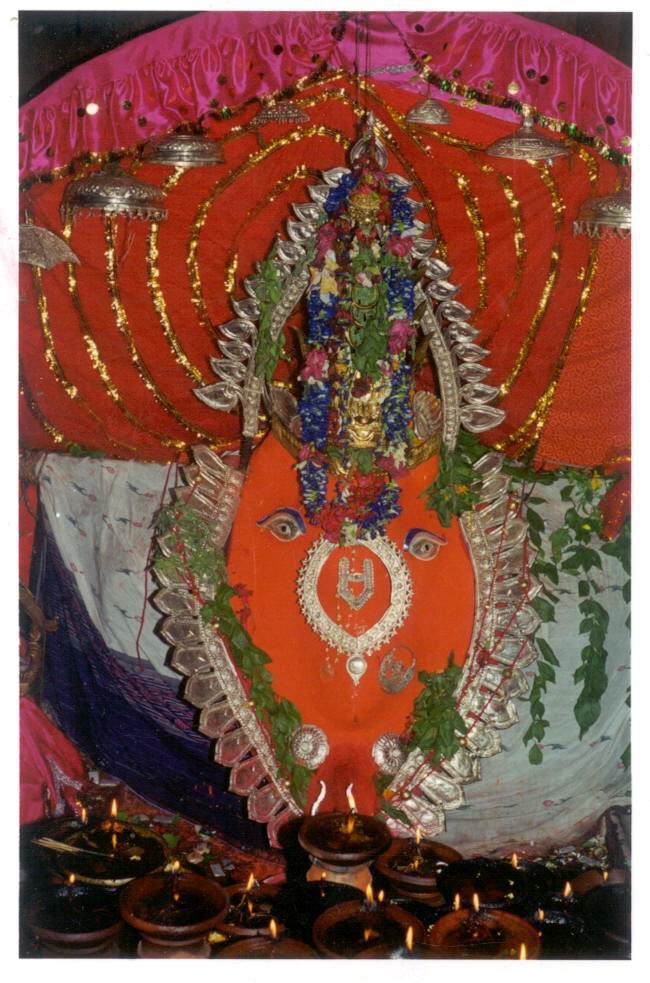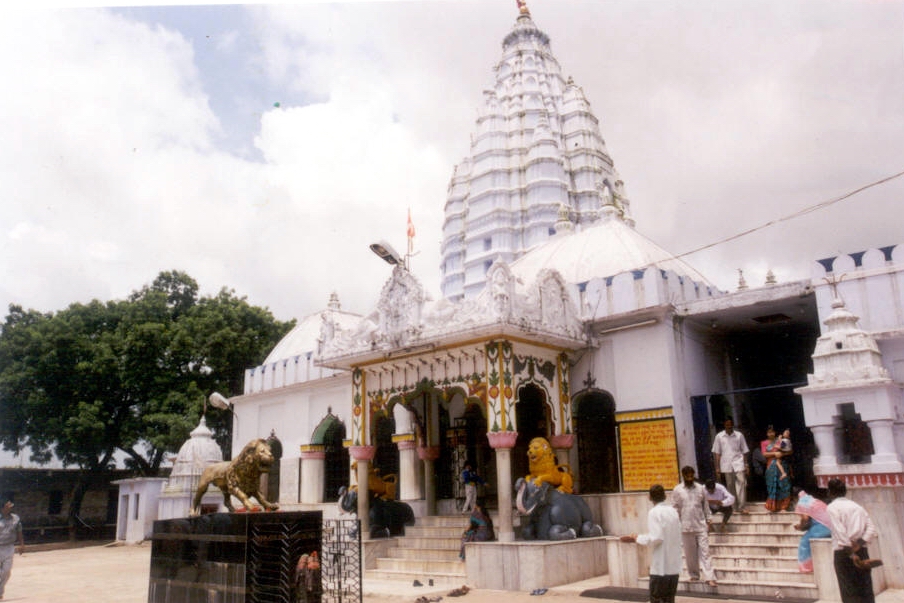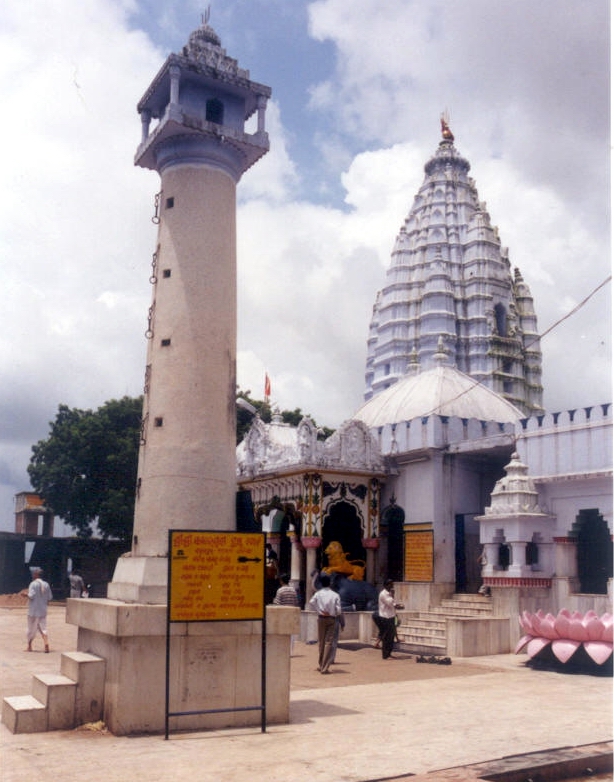

Goddess Samaleswari: Originally the Goddess was known as Somalaiswari. (Soma - eternal bliss) Somalaiswari - Soma Datri meaning one who bestow 'eternal bliss'.
Others believe that,
as goddess Samaleswari was being worshipped
under a Samel tree (cotton tree), she was called Sameleswari,
and later came to be known as Samaleswari. A group of devotees believe
that Sambalpur was named after the goddess.
However, the name Sambalpur is much older, as it found mention in the book Ptolemy {2nd Century AD} as Sambalaka situated by the left bank of river "Manada," presently Mahanadi. It is also mentioned in the the records of Hiuen T' Sang, and in the writings of the celebrated King Indrabhuti (the oldest know ruler of Sambalpur) the founder of Vajrayana Buddhism and the present Lama cult.
 Historical Evidence:
In ancient times Sambalpur was ruled by the Chouhan.
King Balaram Dev, after a long spell of battles, reached the small
hamlet of Bargarh, which he made his temporary capital on the left bank of
river Jira (The ruins are still there - speaking the days of its
glorious past).
Historical Evidence:
In ancient times Sambalpur was ruled by the Chouhan.
King Balaram Dev, after a long spell of battles, reached the small
hamlet of Bargarh, which he made his temporary capital on the left bank of
river Jira (The ruins are still there - speaking the days of its
glorious past).
Balaram Dev went out in search of a suitable place to establish his capital - finally reached the southern bank of river Mahanadi, pitched camp in a small settlement named Chourpur. While taking a break he with amazement observed, two of his ferocious hunting dogs, being chased off by a rabbit, startled - he pondered over the matter, but could not come to any rational explanation. The same day Somalaiswari the presiding deity of the area came to him in a dream, she directed him to build a temple for her on the left bank of the river Mahanadi and thus the temple.
Somalaiswari the presiding deity of the area came to him in a dream, she directed him to build a temple for her on the left bank of the river Mahanadi and thus the temple.